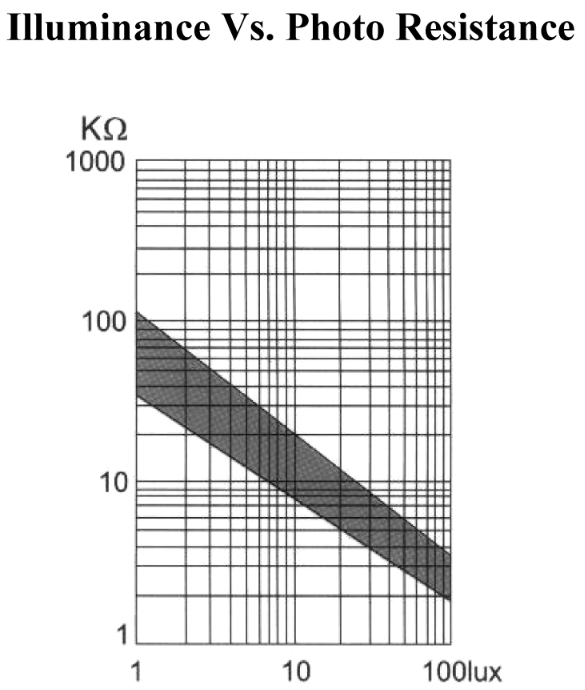This is an old revision of the document!
Photocells / Light Dependent Resistors (LDR)
 |
| Fig.: A cadmium sulfide (CdS) photocell. (Source: SparkFun) |
“The cadmium sulfide (CdS) or light dependent resistor (LDR) whose resistance is inversly dependent
on the amount of light falling on it, is known by many names including the photo resistor, photoresistor,
photoconductor, photoconductive cell, or simply the photocell.”
(cited from Cadmium sulfide (CdS) or light dependent resistors (LDR), by Token, a company from Taiwan)
A common series of LDRs is A9060-XX. The model A9060-09 is often used.
Sample datasheets by PerkinElmer are:
High Variability
Do not trust the resistance-vs-lux curves too much. Adafruit states on its tutorial on Photocells for Arduino:
“Each photocell sensor will act a little differently than the other, even if they are from the same batch. The variations can be really large, 50% or higher! For this reason, they shouldn't be used to try to determine precise light levels in lux or millicandela. Instead, you can expect to only be able to determine basic light changes.”
(cited from Arduino related tutorial on Photocells, by Adafruit)
 |
| Fig.: Typical performance variation of a photocells (log-log-plot). (Source: GL 5528 Photodetector by SparkFun) |
The datasheet on GL5528 Photocell by SparkFun reflects these uncertainties.
LUX
The light “intensity” illuminating the photocell is measured in Lux. This unit takes not just the physical light quantity but also the sensitivity of the human eye into account. It combines physics with physiology.
“The lux (symbol: lx) is the unit of illuminance, or luminous flux per unit area, in the International System of Units (SI).[1][2] It is equal to one lumen per square metre. In photometry, this is used as a measure of the intensity, as perceived by the human eye, of light that hits or passes through a surface. It is analogous to the radiometric unit watt per square metre, but with the power at each wavelength weighted according to the luminosity function, a standardized model of human visual brightness perception. In English, “lux” is used as both the singular and plural form.” (from Wikipedia)
